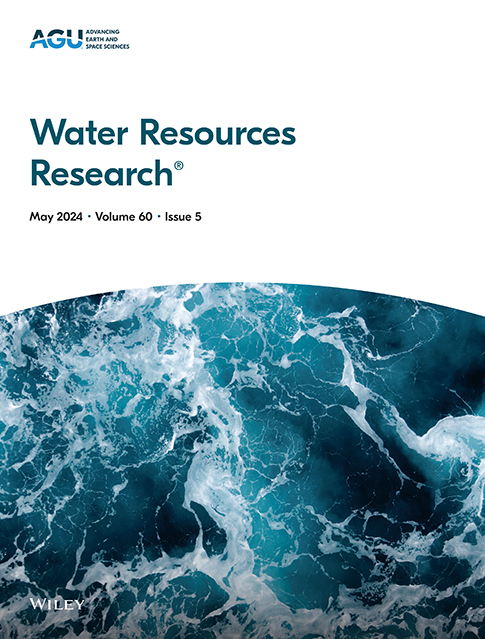Deep Learning-Based Approach for Enhancing Streamflow Prediction in Watersheds With Aggregated and Intermittent Observations
IF 4.6
1区 地球科学
Q2 ENVIRONMENTAL SCIENCES
引用次数: 0
Abstract
Accurate daily streamflow estimates are crucial for water resources management. Yet, many regions lack high-temporal-resolution data due to limited monitoring infrastructure, often relying on monthly aggregates or intermittent observations. Predicting streamflow in these sparsely sampled watersheds remains challenging. This study proposes a deep learning-based approach using Long Short-Term Memory, leveraging its inherent advantages in learning long-term dependencies within hydrological variables and processes to enhance streamflow predictions in sparsely sampled watersheds. The approach was evaluated for simulating daily flow patterns from monthly aggregated and monthly or weekly intermittent observations in two contrasting hydrological settings: near-natural and human-influenced watersheds. Results showed that the proposed approach reliably predicts daily flows from monthly aggregates with a median Nash-Sutcliffe efficiency (NSE) of 0.61 for near-natural and 0.48 for human-influenced watersheds. The proposed approach performed even better for daily flow predictions from monthly or weekly intermittent observation, achieving a median NSE of 0.70 and 0.55 for near-natural and human-influenced watersheds, respectively. The proposed approach remained robust across different seasons and hydrological regimes, with a median percentage bias of ±5%, except in arid regions. Moreover, data sensitivity analysis indicated that data from wet seasons were crucial for improving model predictions and that weekly data could yield results comparable to daily observations. Overall, this study demonstrates that the deep learning-based approach offers a robust and accurate representation of daily streamflow patterns from aggregated or intermittent observations, providing valuable hydrological insights and promising solutions for improving water resource management in regions with limited monitoring infrastructures.基于深度学习的集中性间断性流域流量预测方法
准确的日流量估算对水资源管理至关重要。然而,由于监测基础设施有限,许多地区缺乏高时间分辨率的数据,往往依赖于月度汇总或间歇性观测。预测这些样本稀少的流域的流量仍然具有挑战性。本研究提出了一种基于深度学习的方法,使用长短期记忆,利用其在学习水文变量和过程中的长期依赖关系方面的固有优势,以增强样本稀疏的流域的流量预测。在两种不同的水文环境(近自然和人为影响的流域)中,通过每月汇总和每月或每周间歇观测模拟每日流量模式,对该方法进行了评估。结果表明,该方法可靠地预测了月总量的日流量,近自然流域的纳什-苏特克利夫效率(NSE)中值为0.61,人为影响流域的NSE中值为0.48。所提出的方法在每月或每周间歇观测的日流量预测中表现更好,在接近自然和人为影响的流域中,NSE的中位数分别为0.70和0.55。除干旱地区外,该方法在不同季节和水文条件下仍保持稳健,中位数百分比偏差为±5%。此外,数据敏感性分析表明,来自雨季的数据对于改进模式预测至关重要,每周数据可以产生与日常观测相当的结果。总体而言,本研究表明,基于深度学习的方法可以从汇总或间歇性观测中提供可靠而准确的日常流量模式表示,为改善监测基础设施有限的地区的水资源管理提供了有价值的水文见解和有希望的解决方案。
本文章由计算机程序翻译,如有差异,请以英文原文为准。
求助全文
约1分钟内获得全文
求助全文
来源期刊

Water Resources Research
环境科学-湖沼学
CiteScore
8.80
自引率
13.00%
发文量
599
审稿时长
3.5 months
期刊介绍:
Water Resources Research (WRR) is an interdisciplinary journal that focuses on hydrology and water resources. It publishes original research in the natural and social sciences of water. It emphasizes the role of water in the Earth system, including physical, chemical, biological, and ecological processes in water resources research and management, including social, policy, and public health implications. It encompasses observational, experimental, theoretical, analytical, numerical, and data-driven approaches that advance the science of water and its management. Submissions are evaluated for their novelty, accuracy, significance, and broader implications of the findings.
 求助内容:
求助内容: 应助结果提醒方式:
应助结果提醒方式:


